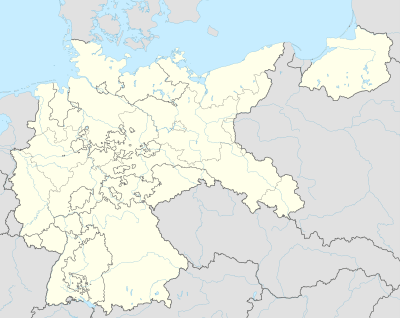Oflag II-C
| Oflag II-C | |
|---|---|
| Woldenberg, Brandenburg | |
 Oflag II-C | |
| Coordinates | 52°58′N 15°45′E / 52.96°N 15.75°E |
| Type | Prisoner-of-war camp |
| Site information | |
| Controlled by |
|
| Site history | |
| In use | 1939-1945 |
| Garrison information | |
| Occupants | Polish officers |
Oflag II-C Woldenburg was a German World War II prisoner-of-war camp located about 1 kilometre (0.62 mi) from the town of Woldenberg, Brandenburg (now Dobiegniew, western Poland). The camp housed Polish officers and orderlies and had an area of 25 hectares (62 acres) with 25 brick huts for prisoners and another six for kitchens, class-rooms, theater, and administration.
Camp history
Work on the camp began in October 1939 when 500 Polish prisoners from the September campaign arrived to build the camp, and who lived initially in tents. In May 1940 as the building work progressed small groups of Polish officers were transferred in from other POW camps. In July 1941 a group of officer-cadets (podchorąży) were brought from Stalag II-A. They were divided among the 25 huts to work as orderlies, in addition to the lower ranks that were already doing this work. In April 1942 the last group of Polish officers arrived from Oflag X-C near Lübeck. The number of inmates reached its peak of 5,944 officers and 796 orderlies. In October 1944 a small number of higher-ranking officers arrived from the Warsaw Uprising. On 28 January 1945 the POWs were assembled and marched westward, but after two days they were liberated by the Soviet Red Army.
Escapes
There were several escape attempts, but only two were successful. In early 1942 three officers managed to hide inside empty boxes in a truck that was unloading food supplies. They were successful. On Christmas Eve 1942 a number of officers arranged a fight outside one of the huts. While the guards were engaged in breaking up the fight, toward which the searchlights were all directed, three officers managed to cut through the barbed wire and escape from the camp. A larger scale attempt was unsuccessful. In 1943 a tunnel was being dug from a hut closest to the wires. About 150 officers were preparing to get out through it. Unfortunately, as the tunnel was within a few metres of its end it was discovered.
Cultural life
Cultural life in the camp was very extensive. A large number of classes were conducted by the 80 officers who were professors or teachers in civilian life. These classes included philosophy and law, as well as French and English. Mathematics was taught by the architect Professor Jerzy Hryniewiecki. A number of the prisoners were able to complete full university courses which were recognized after the war.
In the theater a number of plays were presented by two professional directors - Kazimierz Rudzki and Jan Kocher. Some new plays were written, including a three-act drama called Mały ("The Little One") written by Andrzej Nowicki. There was also a symphony orchestra under the direction of Józef Klonowski.
In 1942 a secret radio receiver was built and the news distributed throughout the camp in newsletters.
1944 POW Olympics
In the summer of 1944 the prisoners were granted permission to stage an unofficial POW Olympics from July 23 to August 13. An Olympic Flag was made with a bed sheet, and pieces of colored scarves was raised.[1]
Notable inmates
- Tadeusz Adamowski, born in Switzerland, raised in the United States, hockey player for Poland in 1928 Olympics.
- Andrzej Nowicki, poet and satirical writer
See also
References
- Notes
- ↑ Grys, Iwona (1996). "The Olympic Idea Transcending War" (PDF). Olympic Review. XXV (April–May 1996): 68.
- Bibliography
- "Zapomniany oflag II C Woldenberg" by Teofil Lachowicz - article in "Przeglad Polski" of 14 September 2001. (Polish)
- Detailed description of camp life (Polish)
External links
- Oflag II-C Woldenberg (1940–1945) by Przemysław Bartosik